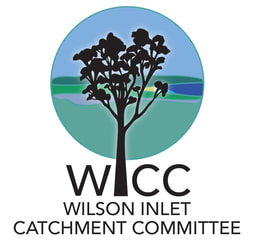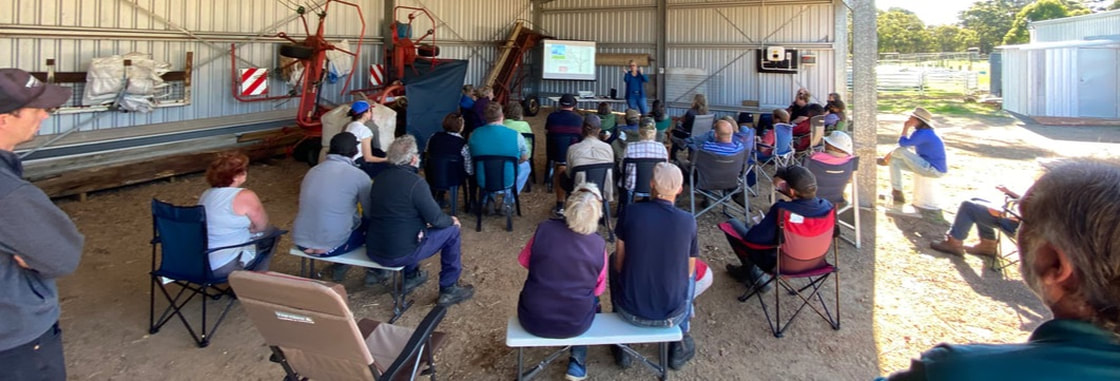Rotational grazing makes cents
Around 40 farmers attended the WICC’s latest Wilson Inlet Grower Group (WIGG) meeting to learn about rotational grazing. The feed budget on farms can represent the largest on farm cost…and the cheapest feed is pasture. Making the most efficient use of this cheap feed is a science in itself.
Livestock vet, Dr Jeisane Accioly-Mcillree, demonstrated how growers can increase pasture production by 50% by optimising the rotation of their livestock. On rye grass in winter months, cattle should be rotated every 3 to 4 days to the next paddock leaving a pasture stubble of 4 to 6 cm. This maintains plant sugar reserves and leaves which allows photosynthesis to help the pasture recover quickly. Research has shown that resting pasture 30 days versus 10 days can yield nearly 3 x the dry matter. A basic rotational grazing plan for 11 paddocks would have stock rotated every 3 to 4 days, allowing the first paddock in the rotation to be rested for 5 weeks. This will vary depending on the season and soil fertility.
Rotational grazing also has the added benefit of leaving more root matter in the ground because the below ground biomass (roots) is representative of the above ground biomass (plant). The extra roots builds soil humus and sequesters more carbon from the atmosphere. This extra carbon improves the soil structure, water retention and vital nutrients. This healthier, more productive pasture allows farmers to increase their stocking rates which means that rotational grazing makes financial and environmental sense.
Jeisane acknowledged that this all may sound simple on paper, however it can be much more difficult to implement on ground given the variances in soil type, seasonal fluctuations, extra fencing costs and managing mixed grazing enterprises. These complexities can be overcome by farmers willing to make the extra effort and think a bit outside the box.
WIGG is supported in part by the Western Australian State NRM program.
Livestock vet, Dr Jeisane Accioly-Mcillree, demonstrated how growers can increase pasture production by 50% by optimising the rotation of their livestock. On rye grass in winter months, cattle should be rotated every 3 to 4 days to the next paddock leaving a pasture stubble of 4 to 6 cm. This maintains plant sugar reserves and leaves which allows photosynthesis to help the pasture recover quickly. Research has shown that resting pasture 30 days versus 10 days can yield nearly 3 x the dry matter. A basic rotational grazing plan for 11 paddocks would have stock rotated every 3 to 4 days, allowing the first paddock in the rotation to be rested for 5 weeks. This will vary depending on the season and soil fertility.
Rotational grazing also has the added benefit of leaving more root matter in the ground because the below ground biomass (roots) is representative of the above ground biomass (plant). The extra roots builds soil humus and sequesters more carbon from the atmosphere. This extra carbon improves the soil structure, water retention and vital nutrients. This healthier, more productive pasture allows farmers to increase their stocking rates which means that rotational grazing makes financial and environmental sense.
Jeisane acknowledged that this all may sound simple on paper, however it can be much more difficult to implement on ground given the variances in soil type, seasonal fluctuations, extra fencing costs and managing mixed grazing enterprises. These complexities can be overcome by farmers willing to make the extra effort and think a bit outside the box.
WIGG is supported in part by the Western Australian State NRM program.

